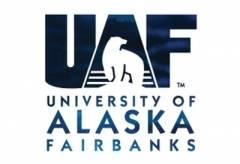Read more about our ranking methodology.
Fairbanks, AK 99775
* These statistics utilize the most recently released data from IPEDS (Integrated Postsecondary Education Data System)
Sources for school statistics and data include U.S. Department of Education's National Center for Education Statistics and the Integrated Postsecondary Education Data System. Data may vary depending on school and academic year.


- Nursing (PNUR) - Practical nursing programs
- Clinical Psychology (CLPSY) - PhD Doctoral programs
- Teacher Education (TED) - Baccalaureate and graduate programs for the preparation of teachers and other professional personnel for elementary and secondary schools
Source data obtained from U.S. Department of Education's Office of Post-secondary Education (OPE)

What letter grade would you give your school on how well it prepares students for a career in the real world?
Based on 1 ReviewsWhat letter grade would you give the students/culture at your school?
Based on 0 ReviewsWhat letter grade would you give the facilities at your school.
Based on 1 ReviewsWhat overall letter grade would you give the activities/groups at your school?
Based on 1 ReviewsJournalist George Polk, visual effects specialist Ben Grossmann, wildlife conservationist George Schaller, and naturalist Margaret Murie are among the famous people who attended UAF. Alaska’s first senator, Bob Bartlett, also graduated from the university. Athletes Chad Johnson, Cody Kunyk, Jordan Hendry, and Curtis Fraser crushed the collegiate ice game before being drafted into the National Hockey League.
At 2,250 acres, the UAF campus is huge! But only about 10 percent of the land actually contains academic, research, and residential buildings. This campus core sits on a ridge top with spectacular views across the Tanana Valley to the Alaska Range. The Agricultural and Forestry Experiment Station, the Georgeson Botanical Garden, and a boreal forest known as North Campus make up most of the remaining acreage. Snow covers the campus from October through March. Students looking for some indoor fun head to the Student Recreation Center to tackle one of the best climbing walls in the state.
Administration of justice, online innovation and design, security and disaster management, and business are among UAF’s online degree programs. Many of its other offerings focus on specific job-related skills, such as medical coding and applied accounting.
The Nanooks compete in Division I and II of the NCAA, depending on the sport. Don’t fret over the lack of a football team – men’s ice hockey provides plenty of school spirit opportunities. And while the university fields both men’s and women’s skiing teams, competition isn’t limited to winter sports. Swimming, volleyball, basketball, and cross country attract their share of student athletes. It’s the 10-time NCAA champion rifle team, however, that has brought the school the most glory.
Students interested in the circumpolar North would be hard pressed to find a more appropriate place than UAF. The university’s location influences both the disciplines offered and the research conducted. Institutes on campus are devoted to issues such as climate change and the challenges of cold-weather engineering. Fisheries is the most popular graduate program. UAF is the only institution in the state that awards doctoral degrees. The 1.75-million-item Rasmuson Library, the largest in the state, supports the academic efforts of all students.
